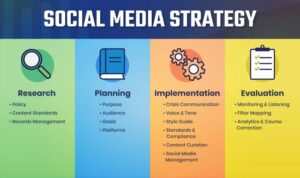Affiliate Marketing Guide: Buckle up for a wild ride through the world of affiliate marketing where success awaits those who dare to venture into this dynamic realm.
Let’s dive deep into the strategies, tips, and ethical considerations that will propel you towards maximizing earnings and building a loyal audience.
Introduction to Affiliate Marketing

Affiliate marketing is a performance-based marketing strategy where businesses reward affiliates for bringing in customers through the affiliate’s marketing efforts. Affiliates earn a commission for each sale, lead, or click generated through their referral links.
Successful examples of affiliate marketing programs include Amazon Associates, which allows website owners and bloggers to promote Amazon products and earn a commission on each sale. Another example is the affiliate program by Shopify, where affiliates can earn commissions for referring new customers to the e-commerce platform.
The benefits of affiliate marketing for businesses include expanding their reach and customer base through the efforts of affiliates. It is a cost-effective way to increase sales and brand awareness without upfront advertising costs. For affiliates, the benefits include the opportunity to earn passive income by promoting products or services they believe in, without the need to create their own products.
Getting Started with Affiliate Marketing: Affiliate Marketing Guide

Starting an affiliate marketing business involves several key steps, including choosing a niche and joining affiliate programs.
Choosing a Niche for Affiliate Marketing
When selecting a niche for affiliate marketing, it’s essential to consider your interests, expertise, and the market demand. Here are some steps to help you choose the right niche:
- Identify your passions and interests to ensure you enjoy working within the niche.
- Research market trends and demand to determine if the niche is profitable.
- Evaluate competition and assess your ability to stand out in the niche.
- Consider the audience you want to target and tailor your niche selection accordingly.
Finding and Joining Affiliate Programs
Once you’ve chosen a niche, the next step is to find and join affiliate programs. Here’s how you can go about it:
- Research and identify reputable affiliate programs related to your niche.
- Review the commission structure, payment terms, and promotional materials offered by each program.
- Apply to join the affiliate programs that align with your niche and goals.
- Upon approval, start promoting the affiliate products or services using unique tracking links provided by the programs.
Strategies for Successful Affiliate Marketing
To succeed in affiliate marketing, it is crucial to create engaging content that resonates with your audience, build trust with your followers, and optimize your content for search engines. Here are some key strategies to help you excel in affiliate marketing:
Creating Engaging Content
Creating engaging content is essential to attract and retain your audience’s attention. Consider the following tips to make your content more compelling:
- Understand your audience: Tailor your content to meet the needs and preferences of your target audience.
- Use visual elements: Incorporate images, videos, and infographics to make your content more visually appealing.
- Write compelling headlines: Craft attention-grabbing headlines that entice users to click and read your content.
- Provide valuable information: Offer valuable insights, tips, and recommendations that add value to your audience.
Building Trust with Your Audience
Building trust is crucial in affiliate marketing as it encourages your audience to take your recommendations seriously and increases the likelihood of them making a purchase. Here’s how you can build trust with your audience:
- Be transparent: Disclose your affiliate relationships and be honest about any sponsored content.
- Recommend products you genuinely believe in: Only promote products or services that you have personally tried and can vouch for.
- Engage with your audience: Respond to comments, messages, and feedback to show your audience that you value their opinions.
- Establish yourself as an authority: Share your expertise and knowledge in your niche to position yourself as a trustworthy source of information.
Optimization in Affiliate Marketing
plays a critical role in driving organic traffic to your affiliate content. To optimize your content for search engines, consider the following tips:
- research: Identify relevant s that your target audience is searching for and incorporate them strategically into your content.
- Optimize meta tags: Craft compelling meta titles and descriptions that encourage users to click on your affiliate links.
- Create high-quality content: Produce valuable, informative content that is optimized for both users and search engines.
- Build backlinks: Earn backlinks from reputable websites to boost your content’s authority and visibility in search engine results.
Maximizing Earnings and Conversions
When it comes to affiliate marketing, maximizing earnings and conversions is key to success. By implementing effective strategies and optimizing your affiliate links and placements, you can significantly increase your revenue potential.
Importance of Tracking and Analyzing Affiliate Marketing Performance
Tracking and analyzing your affiliate marketing performance is crucial for understanding what’s working and what’s not. By monitoring key metrics like click-through rates, conversion rates, and earnings per click, you can make informed decisions to optimize your campaigns for better results.
Remember, data-driven insights are your best friend in the world of affiliate marketing.
Techniques for Optimizing Affiliate Links and Placements
Optimizing your affiliate links and placements can make a significant impact on your earnings. Here are some techniques to consider:
- Strategic Placement: Ensure your affiliate links are placed in prominent positions on your website or content where they are more likely to be noticed by your audience.
- Relevance: Make sure that the products or services you are promoting through affiliate links are relevant to your audience’s interests and needs.
- Call-to-Action: Use compelling call-to-action phrases that encourage your audience to click on the affiliate links and make a purchase.
- A/B Testing: Experiment with different placements, designs, and messaging for your affiliate links to see what generates the best results.
Legal and Ethical Considerations in Affiliate Marketing
In the world of affiliate marketing, it is crucial to adhere to legal requirements and ethical practices to maintain transparency and credibility with your audience.
Legal Requirements and Regulations
- Affiliate marketers must disclose their relationship with the brands they are promoting in a clear and conspicuous manner.
- Compliance with FTC guidelines is essential, including proper disclosure of affiliate links and sponsored content.
- It is important to comply with international laws and regulations regarding data protection and consumer rights.
Ethical Practices and Disclosure Guidelines, Affiliate Marketing Guide
- Avoid misleading or deceptive advertising practices to protect the trust of your audience.
- Disclose any financial or material connections with the products or services you are promoting.
- Provide honest and unbiased reviews to maintain credibility and build long-term relationships with your audience.
Tips for Maintaining Transparency and Credibility
- Be upfront about your affiliate relationships and clearly label any sponsored content.
- Regularly review and update your disclosure policies to ensure compliance with current regulations.
- Focus on providing value to your audience rather than just pushing products to maximize earnings.











